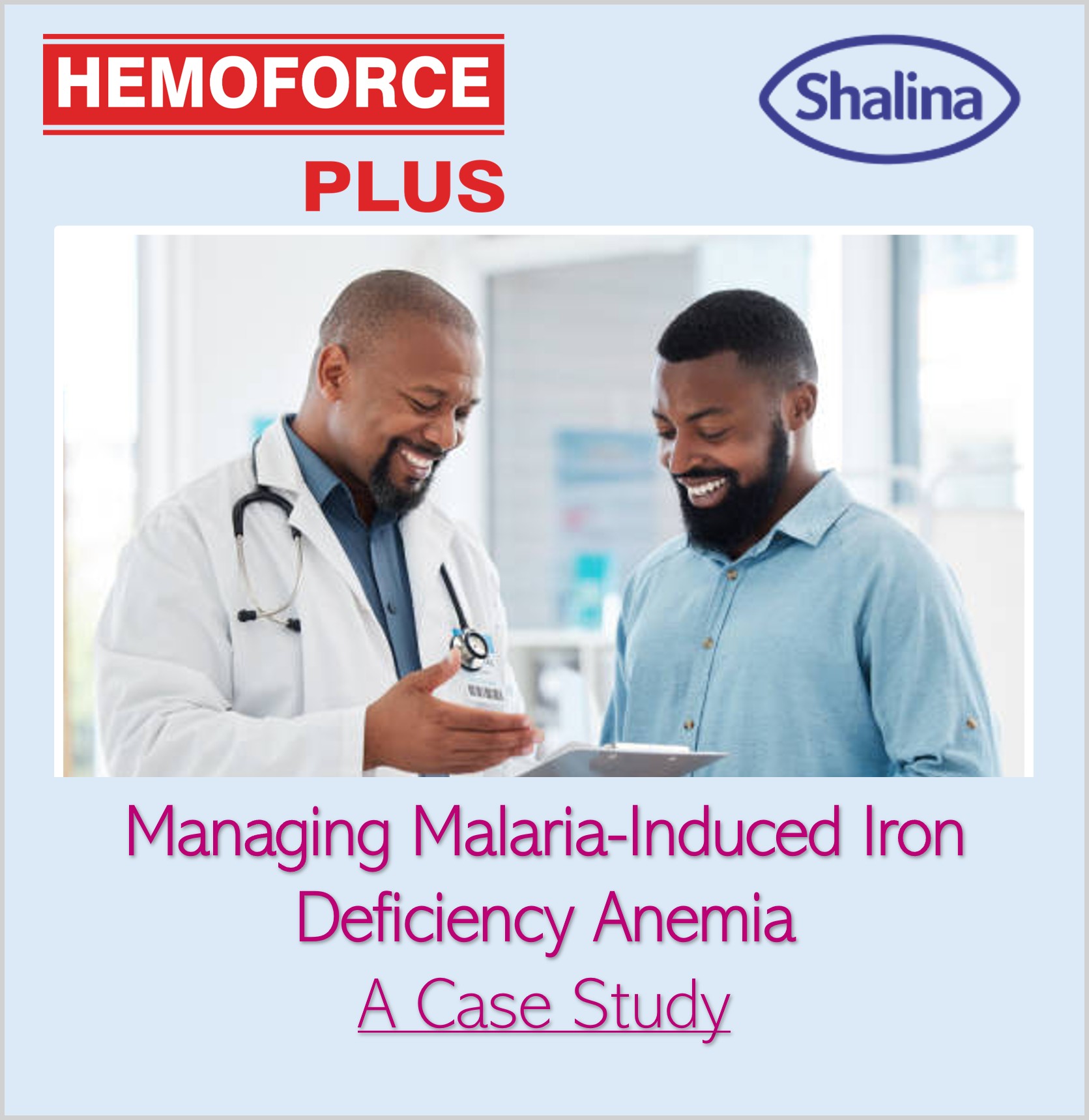One of the common causes of Iron Deficiency Anemia (IDA) in Africa is malaria, resulting from the hemolysis of both infected and uninfected red blood cells. Additionally, preexisting iron deficiency can further impact recovery from post-malarial anemia.
This case review CME presents the diagnosis and management of a 28-year-old male who reported with fatigue and dizziness and was diagnosed with IDA following a malaria episode. Considering the high burden of post-malarial anemia in sub-Saharan Africa and the potential contribution of G6PD deficiency to red cell destruction, timely oral iron therapy was initiated. The patient was treated with Hemoforce Plus, a combination of ferric ammonium citrate (FAC), vitamins and minerals, chosen for its better gastrointestinal tolerability and enhanced hematologic response compared to conventional iron salts. After one month, the patient reported complete symptom relief, with a rise in hemoglobin level, indicating effective recovery and improved compliance.

